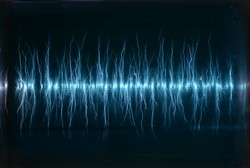Shaping a bright future for plasma science in Europe
The potential use of low-temperature partially ionised plasma in manufacturing and materials processing as well as medical applications has attracted attention in recent years. Plasma physics has a great impact on our everyday lives, even if it remains mostly hidden, in the production of many everyday devices. In Europe, the INP Greifswald is an acknowledged expert in low-temperature plasma physics and the largest non-university institute in that particular field of research, its basics and technical applications. With funds from the PLASMASHAPE 2012(opens in new window) (Research potential – Plasma potential Shaping a European research centre for plasma technology), INP Greifswald was able to support an extensive scientific exchange and their international partners. PLASMASHAPE 2012 was a major EU-funded project that was carried out between June 2013 and May 2016. During the project's 3-year lifetime, INP Greifswald received more than EUR 2.64 million to extend its research activities to an international level. About 100 plasma physics experts from partner institutes visited the INP Greifswald during the project's duration. Approximately the same number of experienced researchers from INP Greifswald were funded to visit collaborating partner institutes. New strategic partnerships with research institutions all over Europe have been strengthened and established. To complete these activities an impetus was given on thinking ahead and shaping the future of plasma science worldwide with specially designed workshops bringing together distinguished researchers and young scientists. Five world-leading European researchers were engaged to broaden the research fields at the institute. Complementary investments to update laboratory equipment involved extending the on-site plasma analysis with a mobile TC-SPC system as well as understanding of plasmas interacting with surfaces through a scanning transmission electron microscope detector and ultramicrotome. A recruited patent manager and a sophisticated management software enabled the institute to secure its innovation potential. To enhance INP Greifswald's visibility the project supported networking, fostering of scientific excellence and measures to make INP Greifswald a more attractive place to work. Overall, PLASMASHAPE 2012 offered INP Greifswald the means to make the most of its scientific advances and research in the rapidly growing field of low-temperature plasmas and to also become better integrated in the European Research Area.



